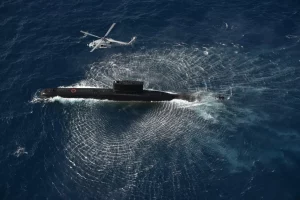Three underwater geographical structures located in the Indian Ocean have been awarded names proposed by India. Named after the rulers of the Mauryan dynasty are the Ashoka seamount and the Chandragupt ridge. Kalpataru ridge is the third structure.
India Names Three Underwater Structures
Why In News
- Three underwater geographical structures located in the Indian Ocean have been awarded names proposed by India. Named after the rulers of the Mauryan dynasty are the Ashoka seamount and the Chandragupt ridge. Kalpataru ridge is the third structure for which the International Hydrographic Organization (IHO) and UNESCO’s Intergovernmental Oceanographic Commission (IOC) have recently awarded names originally proposed by India.
All You Need To Know
- All the three recently named structures were discovered by oceanographers from the National Centre for Polar and Ocean Research (NCPOR), Goa. These are located along the Southwest Indian Ridge area of the Indian Ocean and were discovered during an international survey exploration programme.
- Since 2004, India has been undertaking the Indian Southern Ocean Research Programme with NCPOR being the nodal agency.
- These sea explorations aim at studying the bio-geochemistry, biodiversity, lower atmospheric processes, paleoclimate, hydrodynamics, air-sea interactions among a host of other research areas.
- It was with the help of the Russian Sea vessel Akademik Nikolay Strakhov that the Indian research team discovered the Ashok seamount in 2012. The oval shaped structure spans over an area of 180 sqkm.
- Also discovered by the same Russian vessel in 2012 was the elongated Kalpataru ridge which is spread over an area of 430 sq km.
- Experts said that this ridge may have supported marine life, habitat shelter and food for various species. Discovered in 2020 by the Indian ocean research, the vessel MGS Sagar Chandragupt ridge is an elongated and oval shaped body covering a total area of 675 sq km.
- The worldwide ocean data is maintained and provided by the General Bathymetric Chart of Oceans operating under the IOC and IHO.
Other Structures
- Previously, other structures bearing Indian names include the Raman ridge (accepted in 1992), discovered in 1951 by a US oil vessel. It was named after Physicist and Nobel Laureate Sir CV Raman.
- In 1992, the Panikkar Seamount (accepted in 1993) was discovered by India research vessel Sagar Kanya. It is named after NK Panikkar, a renowned oceanographer.
- For its successful 22nd cruise in 1986 leading to its discovery, a seamount was named after the research vessel Sagar Kanya (accepted in 1991) itself.
- Geologist DN Wadia was honoured when an underwater volcanic mountain, known as guyot, was named after him in 1993 following its discovery in 1992 by Sagar Kanya.
























